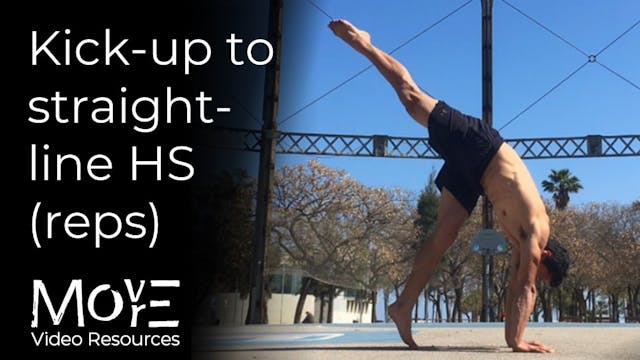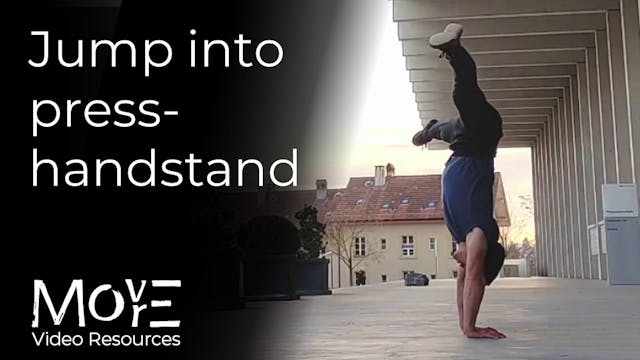Learning to fall from the Handstand
Handstand entry & exit
•
2m 19s
FEAR MANAGEMENT:
For inverted practice toward the handstand to be the most effective, FEAR must be respected and effectively managed. And as this fear is not necessarily due to being inverted, but rather the fear of from FALLING from inversion, we can overcome this by developing both effective tools to fall safely and, with them, self-confidence in the ability to "catch" ourselves.
From the outside it must be emaphasised that effectively/safely "catching" oneself from falling is generally a NATURAL reaction. In the absence of fear, most individuals will perform the 'cartwheel' exit outline in the resource automatically without any need for cuing. For these individuals, trying to explain/pattern/cue this natural tendency is much more likely to INTERFERE with their automatic falling pattern, unless they are already quite conscious of it.
LEARN MORE (subscriber-only):
https://drive.google.com/file/d/18gYhuHO-eRa4eVPihNxNqF2w2k7fs3Qz/view?usp=drive_link
___________________
For programming, guidance, & support for your physical practice:
FREE fundamental prehabilitation program: https://www.movemoremp.com
Online Support (1 to 1 coaching): https://movemoremp.com/onlinesupport
Elements (standardised programs): https://www.movemoremp.com/elements
[email protected]
Up Next in Handstand entry & exit
-
Handstand kick-up to wall
THE WHAT:
The 'kick-up to wall' must be developed before the practitioner can effectively practice both supported-alignment and supported-balance back-to-wall drills. A common misconception is that the inability to kick-up to wall is due to a lack in strength, however, this is rarely the case.M...
-
Kick-up to straight-line handstand (r...
THE WHAT & WHY:
A simple context for developing the consistency of your kick-up into straight-line HS. The objective is to develop EFFICIENCY: the kick-up should feel as easy as possible, use as little energy as possible, make as little noise as possible on landing and use the REBOUND to re-enter... -
Jump into press HS
THE WHAT:
Whilst this context does not significantly contribute to the straight-arm strength required to perform the full 'Press handstand', it allows development of the "popping" texture required for an efficient jump-up into straddle-handstand position which contributes to calibration of power-...



